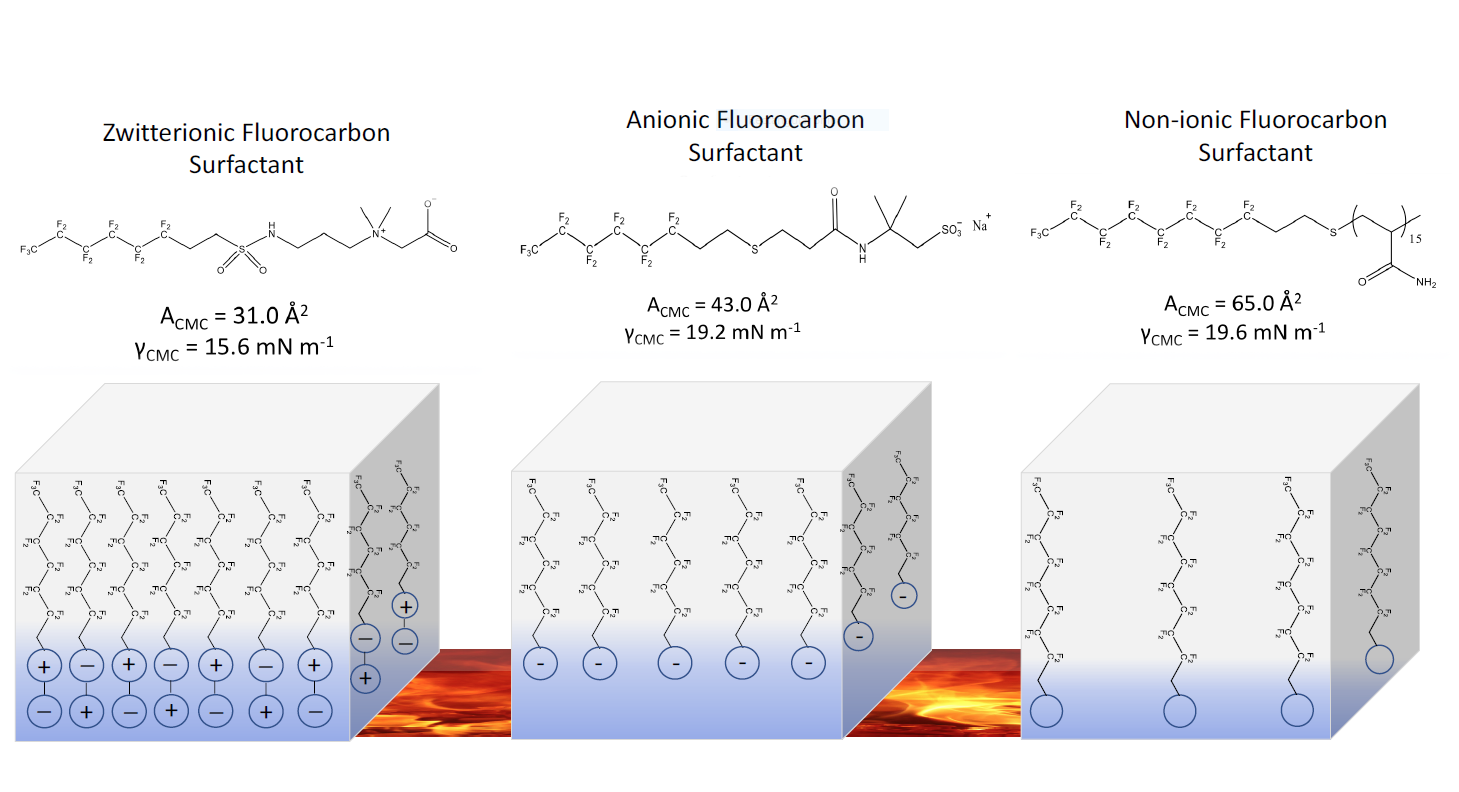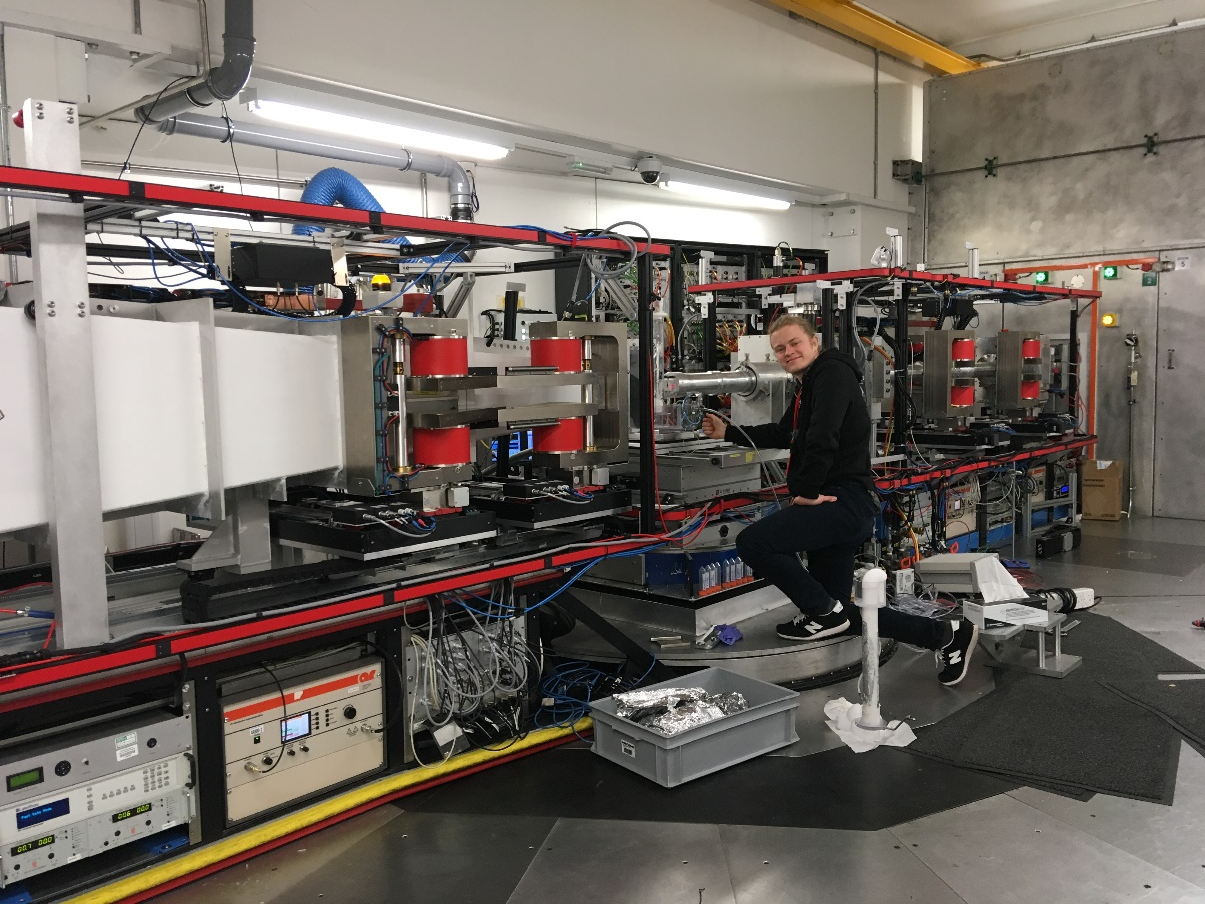Fires can be devastating, meaning a fast and effective response is crucial, but commonly used fire-fighting foams can impact on nature and human health. Owing to their special chemical properties, and superior thermal stability, it is necessary to use fluorine-containing surfactants in fire-fighting foams, rather than the normal hydrocarbon surfactants commonly found in household detergents and cleaning products. Despite advancements in formulations to produce more efficient foams, there is still a substantial negative ecological impact from the fluorocarbon surfactants employed.
Water is often used to combat fires, however it fails to dampen an oily liquid blaze (water just sinks through the burning oil surface due to its higher density). Alternatively foams provide low densities and large surface areas which allow them to exclude oxygen from the burning surfaces and extinguish hydrocarbon-based oil fires. In the past, fire-fighting formulations have included ingredients ranging from enzymatically degraded animal hooves to liquorice. Currently the most effective formulations for flammable liquid fires are aqueous film forming foams (AFFFs) containing complex mixtures of fluorocarbon surfactants, amongst other components.
Fluorocarbon surfactants have several advantages over their hydrocarbon analogues for fire-fighting formulations. Firstly non-polar fluorocarbon tails have both hydrophobic and oleophobic (oil-repelling) properties, unlike the solely hydrophobic tails of hydrocarbon surfactants. Fluorocarbons also show an enhanced tendency to adsorb at the air-water interface increasing their ability to reduce surface tension. They aid in the spreading of the foam over fuel surfaces allowing the formulation to effectively smoother and extinguish the fire. Fluorocarbons were commonly produced by electrochemical fluorination (ECF), however since 2002, legislation has reduced the use of these ECF-based fluorosurfactants. This is because those with a carbon chain length between 8 and 15, are hazardous pollutants, degrading into toxic substances - perfluorooctane sulphonate (PFOS) and perfluorooctanoic acid (PFOA), both of which are hazardous to the environment due to their persistence, toxicity and tendency to accumulate within living organisms (bioaccumulation).
Advances in this field have reduced the toxicity of AFFFs by altering the way they are made, and using a newer process called telomerisation. Although these surfactants are now no longer toxic or bioaccumulating, they are still environmentally persistent. This prompted researchers at the University of Bristol, in collaboration with Angus Fire Ltd., to investigate the individual properties of fluorocarbon surfactants and develop links between chemical structure and surface/bulk behaviour. This new knowledge could be applied to the multi-component formulations used in fire-fighting, to aid in the design of more sustainable and less hazardous replacements of the fluorocarbon components. The researchers used small-angle neutron scattering (SANS) and neutron reflectometry at ISIS to gain insight into these structure-property relationships.
Neutron techniques provide answers
Three commercially available surfactants – DynaxTM DX1030 (anionic), DynaxTM DX2200 (non-ionic) and CapstoneTM 1157 (zwitterionic) were investigated and compared with a research grade reference surfactant, sodium perfluorooctonoate (NaPFO). For each surfactant, researchers identified the critical micelle concentration (CMC) - the specific concentration where surfactants begin to aggregate to form micelles in solution. This value is key to obtaining desired interfacial properties (surface between the air and the surfactant solution). Lab-based surface tension measurements showed that the commercial surfactants all generated very low surface tensions, even at low concentrations, this being vital for improved foam stability and spreading of the fire-fighting foam formulation. However, this surface tension data did not comply with methods of further analysis to determine important surface density parameters such as area per molecule and surface excess (a 2-D "concentration" characterizing the effectiveness of a surfactant). As a way to circumvent this issue, neutron reflectometry was used and was shown to provide more reliable results.

Figure 1: The three surfactants studied and their corresponding structures. Acmc is area per molecule at the CMC and ϒcmc is surface tension at the CMC. (Click image to view full size.)
Small-angle neutron scattering, on the SANS2D instrument at ISIS, was used to investigate bulk behaviour and self-assembly of the surfactants in solution. It was discovered that changing the head group of the surfactant affects bulk and surface behaviour by influencing self-assembly and structure. Scattering data obtained from SANS2D showed that, at concentrations higher than the CMC, the shape of these micelles changed. It was also discovered that smaller head groups produced lamellar-shaped micelles, whereas larger head groups gave rise to ellipsoidal micelles. These new structural insights are crucial in the quest for eco-friendly fire-fighting foams.
Neutron reflectometry was employed on the INTER beam line providing unique information about how these fire-fighting surfactants adsorb and pack at the air-water interface. The reflectivity data provided an easy-to-follow trend in terms of interfacial properties for the three surfactants of interest. Remarkably, researchers observed that changes in head group feed through to large changes in interfacial properties. DynaxTM DX1030 (anionic) and CapstoneTM 1157 (zwitterionic) are similar in their chemical structures, but have different head groups; this difference leads to a 12 Å2 increase in area per molecule for the anionic surfactant. By isolating these kinds of features, new surfactants can be tailored to improve their performance in second generation fire-fighting formulations.
"This research shows that neutron scattering and reflection are both invaluable techniques for studying technical grade surfactants, such as are used in commercial formulations. Furthermore, these neutron methods give reliable results, in contrast to lab-based methods such as surface tensiometry."
Professor Julian Eastoe, University of Bristol.
Future developments
This research provides a deeper understanding of how these fluorocarbon surfactants adsorb at the air-water interface and self-assemble in solution. Consequently, multi-component mixed surfactant systems used in real fire-fighting formulations can now begin to be explored in future studies. Continued research, building on the results of this study, could aid in the design of more environmentally benign chemicals, for example low fluorocarbon content or hydrocarbon surfactant alternatives, in fire-fighting formations. With the growing urgency to protect our environment, this provides exciting prospects for making new sustainable fire-fighting foams.

Figure 2: University of Bristol PhD Student, Christopher Hill, studying foams produced by fire-fighting surfactants on the LARMOR beamline at ISIS.
Further information
This paper was published in July 2018 in the Journal of Colloid and Interface Science.
Learn more about the ISIS Neutron and Muon Source instrument SANS2D.
Find out more about INTER.
Browse all our science highlights here.
